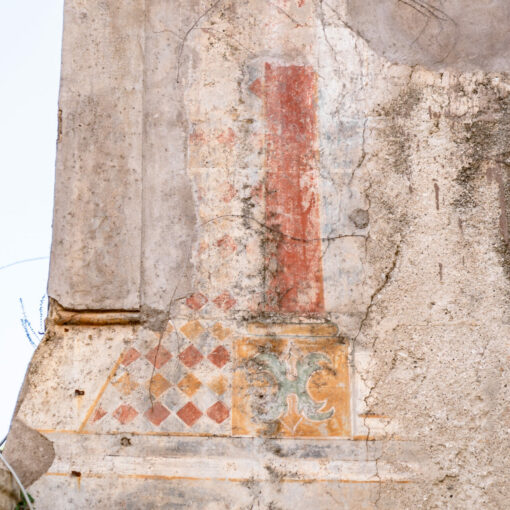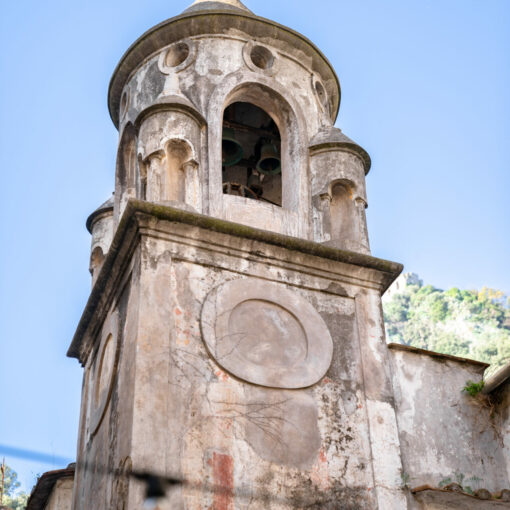The S. Maria Maggiore complex comprises the main church, also known as “Chiesa Nuova” since the 17th century, the underlying crypt, dedicated to San Filippo, and the Oratory “della Reale Arciconfraternita della Madonna Addolorata”. In medieval times there was also in this area the church of S. Pietro in carbonario or de lo monneczario, the cylindrical bell tower of which survives incorporated and used by the confraternity of Addolorata.
The church of S. Maria Maggiore, a former parish church, was founded in the 13th century, as we can see from the inscription on the mantels inside, by the Duke of Amalfi Masone I, in 986 or 987. I It has three naves, divided by columns and pillars. Some furnishing from the 10th century can still be found, such as the transennas that border the presbytery. A nineteenth-century nativity scene and the relic figure of S. Fedele are also present. In the seventeenth century, the church underwent restoration work. The church’s bell tower is a smaller version of the cathedral’s bell tower.
There is a crypt underneath the New Church that follows the layout of the church above. There is a crypt underneath the New Church that follows the layout of the church above. The last wing, rediscovered in 2023 after an archaeological dig, contains the burial tombs from the end of the fifteenth century, and a characteristic vaulted ceiling style, known as “a incannucciata”. A small selection of some Roman, medieval and Renaissance pottery was also discovered. Frescoes dating back to the 19th century were also found in the vaulted ceilings of the three wings.
The Church of the Addolorata, and the Oratory of the Reale Arciconfraternita di Maria Santissima Addolorata, were founded in 1765. The building is a stretched rectangle. The Vietri majolica tile floor and the monks’ benches are worthy of note. This brotherhood, together with the parish of Amalfi, organise the beautiful process of the death of Christ on Good Friday. This procession is recognised by ENIT as being one of the most characteristic and spectacular in all Italy.





